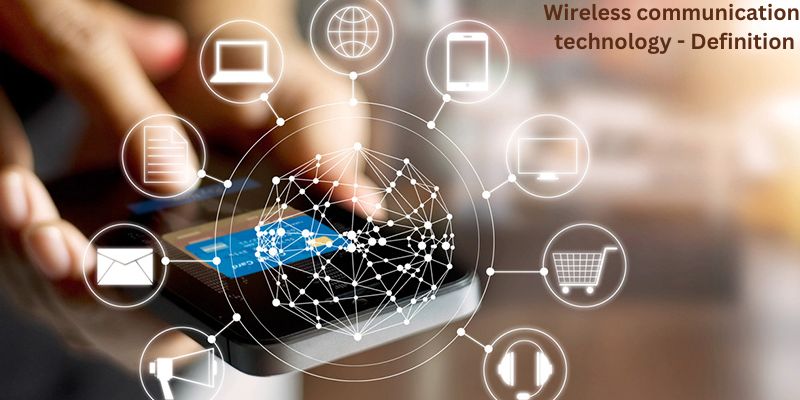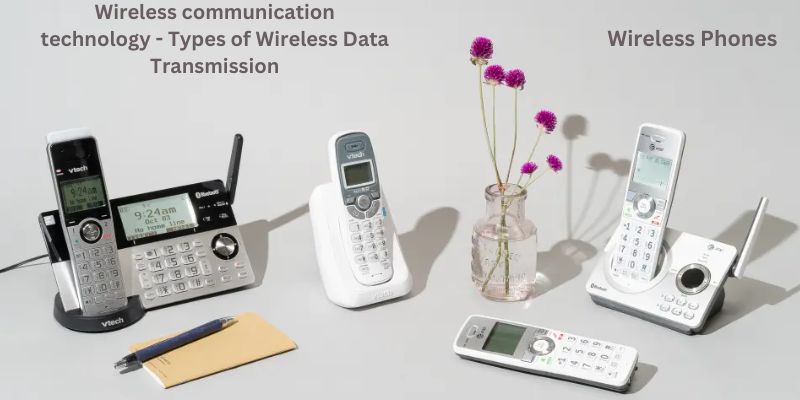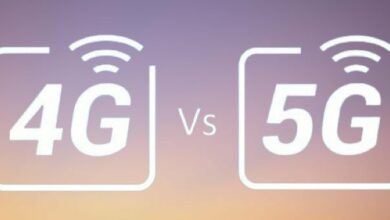
In daily life, wireless communication is extremely important. Wireless technology has merged into our daily lives in addition to communication. In this article, with tech.amthucdatviet.com, let’s find out some useful information about wireless communication technology!
Contents
- 1. Wireless communication technology – Definition
- 2. Wireless communication technology – Types of Wireless Data Transmission
- 3. Wireless communication technology – Difference types
- 3.1 Radio – Type of wireless communication technology
- 3.2 Cellular – Type of wireless communication technology
- 3.3 Satellite – Type of wireless communication technology
- 3.4 Wi-Fi – Type of wireless communication technology
- 3.5 Bluetooth Technology – Type of wireless communication technology
- 3.6 ZigBee – Type of wireless communication technology
- 3.7 WiMAX – Type of wireless communication technology
- Conclusion
1. Wireless communication technology – Definition

Wireless communication is the process of sending data or information wirelessly from one location to another. Through RF and radio transmissions, this allows for a non wires data exchange. Through well defined channels, the data is delivered between the devices at distances ranging from a few meters to many kilometers.
Without the use of wires, cables, or any other type of electrical conductor, wireless refers to the transmission or transfer of information across a distance. One of the key methods for transmitting information or data to other devices is wireless communication. Using electromagnetic waves such as radio frequencies, infrared, satellites, etc., the communication is established and the information is conveyed across the air without the need for any cables in a wireless communication technology system.
2. Wireless communication technology – Types of Wireless Data Transmission
2.1 Radio Frequency Transmission
It is simple to produce RF signals in the 3kHz to 300GHz range. These are utilized in wireless communication due to their ability to pass past barriers and cover large areas.
One method of transmitting data wirelessly is the radio system, which uses an antenna and an electrical conductor to send electromagnetic waves at low frequencies across long distances. With the help of their strong amateur radio equipment, ham radio enthusiasts share information and act as emergency communication aids in times of crisis. They can even transmit digital data throughout the radio spectrum.
2.2 Infrared Transmission
Electromagnetic radiations having longer wavelengths than visible light are known as infrared radiations. Typically, they are employed for close-range communication. Solid things cannot withstand these impulses.
A media transmission technique called infrared uses lasers or light-emitting diodes (LEDs) to send data messages. electromagnetic radiation with a wavelength greater than red light is known as infrared. In an infrared system, information cannot pass through obstructions but may be stopped by light. In a point-to-point system, transmission between two points is only feasible within a certain range and line of sight.
In a point-to-point system, the signal frequency to broadcast at varies from 100 GHz to 1,000 terahertz (THz), while the transmission rate ranges from 100 Kbps to 16 Mbps. Another way to send infrared energy is through a broadcast system, which involves amplifying and retransmitting a data signal to many additional units using reflecting material or a transmission unit. An infrared broadcast system’s typical frequency ranges from 100 GHz to 1,000 THz, with a maximum throughput of 1 Mbps.
2.3 Microwave Transmission
Wireless communication methods employ electromagnetic transmission in the form of microwaves. Microwaves have a wavelength that varies from one meter to one millimeter. The range of frequency is 300MHz to 300GHz. Since they are considerably less costly, they are frequently utilized for long-distance communications.
An efficient technique of wireless data transmission that uses two different mechanisms to send information is microwave. The satellite method, which sends information via a satellite orbiting 22,300 miles above the earth, is one technique used to transport data over the wireless medium of a microwave.
2.4 Lightwave Transmission
Light is electromagnetic radiation having a wavelength that falls somewhere between infrared and ultraviolet. The wavelength is in the 430–750THz region. These optical signals are unidirectional and unguided, like lasers.
2.5 Wireless Phones

Cellular network evolution is broken down into generations. Through cellular and cordless phones, several distinct users can communicate on the same frequency band. Two other examples of gadgets that employ wireless transmissions are cellular and cordless phones.
While mobile phones normally have a considerably wider range than local wireless networks due to the utilization of huge telecommunications towers, cordless phones have a restricted range. Some phones, like Global Positioning System (GPS) devices, rely on satellite signals for communication.
2.6 Other Devices
Wireless devices include anything that communicates using radio waves. Wireless technology is used by common gadgets including walkie-talkies, baby monitors, some video game consoles, and garage door openers.
Computers may communicate wirelessly thanks to hardware components called wireless adapters. Without a wireless adapter, a computer cannot connect to a router and access the Internet. Some computers have wireless adapters integrated right into the motherboard, but it is also feasible to add wireless functionality to a computer that doesn’t already have it by installing stand-alone wireless adapters.
A wireless repeater is a wireless communication tool used to increase a wireless router’s coverage area. A repeater takes wireless signals, boosts their power, and then retransmits them. By putting a repeater in between the router and the PC connected to the router, the signal’s strength may be boosted.
3. Wireless communication technology – Difference types
Since it enables users to connect even from faraway locations, wireless communication technology has recently become an essential component of many different types of communication equipment. Cordless phones, mobile phones, GPS devices, ZigBee technology, wireless computer components, satellite television, etc. are examples of equipment that employ wireless communication. Depending on the communication distance, the data range, and the sort of devices being utilized, many types of wireless communication technologies exist. The many wireless communication technologies are listed below.
3.1 Radio – Type of wireless communication technology
One of the earliest forms of wireless technology was radio communication, which is still in use today. While citizen band and marine radios offer communication services over large distances for truckers and sailors, respectively, portable multi-channel radios allow users to converse over small distances.
Radio transmits sound primarily as radio waves via the atmosphere. Radios have a transmitter that sends data to the receiver antenna as radio waves.
Radio networks partner with stations to broadcast shared programs. The broadcast can take place via syndication, simulcast, or both. Radio transmission may be done across great distances at up to two megabits/sec using satellites, cable FM, and other technologies.
3.2 Cellular – Type of wireless communication technology
Cellular networksElect employs encrypted radio communications that are modulated to let several users to communicate over a single frequency band. The system relies on a network of cellular towers, which are capable of combining the source of any signal and delegating reception chores to the most appropriate antenna, as individual phones lack considerable broadcasting capacity.
Modern 4G systems with speeds comparable to conventional DSL make it possible to transmit data through cellular networks. Customers of cellular operators are charged by the kilobyte for data usage and by the minute for voice usage.
3.3 Satellite – Type of wireless communication technology
A wireless technology with enormous global significance is satellite communication. They are frequently employed in unique circumstances.
The gadgets that use satellite technology to directly interact through radio waves with the circling satellite.
Users may practically stay connected thanks to this from anywhere on the planet. Due to their greater range, portable satellite phones and modems have stronger broadcast functionality and reception technology than cellular devices.
A terrestrial segment and a space segment make up satellite communication. The satellite amplifies the signal when it receives it from a device and sends it back to the receiving antenna, which is on the surface of the planet. The satellite itself is part of the space segment, which is made up of a transmitter, a receiver, and the ground segment.
3.4 Wi-Fi – Type of wireless communication technology

Wi-Fi is an affordable kind of wireless communication. A wireless router acts as a communication hub in a WiFi system, connecting portable devices to an internet connection. Numerous devices can join to this network depending on the router settings. Due to the low transmission power, these networks have a short range, allowing users to connect only when they are nearby.
Many electronic devices, including laptops, computers, cellphones, etc., employ Wi-Fi, a low-power wireless communication technology. A wireless router acts as the core of communication in a Wi-Fi system. Due to the weak transmissions, the range of these networks is incredibly constrained, allowing users to join only when they are close to a router or signal repeater. Home networking apps frequently use Wi-Fi, which offers mobility without requiring cords. Wi-Fi networks must be password-protected for security reasons in order to prevent unauthorized access.
Numerous devices can join to this network depending on the router settings. Due to the low transmission power, these networks have a short range, allowing users to connect only when they are nearby.
3.5 Bluetooth Technology – Type of wireless communication technology
The primary function of Bluetooth technology is to enable wireless data transfer and exchange across a number of different electronic devices. Bluetooth, which sends data from one device to another, is used to link cell phones to hands-free earpieces, wireless keyboards, mice, and microphones, as well as laptops. The wireless communications industry makes the most use of Bluetooth technology, which serves a variety of purposes.
3.6 ZigBee – Type of wireless communication technology
A wireless communication standard called ZigBee was created to meet the special requirements of low-power, inexpensive wireless sensor and control networks. ZigBee may be used practically anyplace since it is simple to set up and uses minimal energy to run. In order to communicate data with a straightforward format like the data from sensors, Zigbee was developed.
3.7 WiMAX – Type of wireless communication technology
There are wireless broadband options that allow for quick Web browsing without the need for cable or DSL (WiMAX is one such wireless broadband option). WiMAX is substantially slower than hard-wired broadband even though it has the ability to deliver data speeds of more than 30 Megabits per second. Instead, service providers often supply 6 Megabits per second or less on average.
Depending on how far away the transmitter is, the real cost of the data made available over WiMAX varies greatly. The 4G wireless technology offered by Sprint in phones includes WiMAX as one of its 4G wireless variants.
Conclusion
Today’s wireless communication systems are an integral element of many different wireless communication devices that enable communication even from remote operating regions. Mobile phones are one example of a variety of wireless communication devices. Satellite television, GPS, Wi-Fi, cordless phones, Zigbee wireless technologies, and wireless computer components. Bluetooth, Wi-Fi, and 3G and 4G networks are all present in modern wireless phones.
I hope you found the information of this article about wireless communication technology useful. Have a good day
Conclusion: So above is the Wireless Communication Technology – Best Definition And 7 Difference Types article. Hopefully with this article you can help you in life, always follow and read our good articles on the website: Tech.amthucdatviet.com




